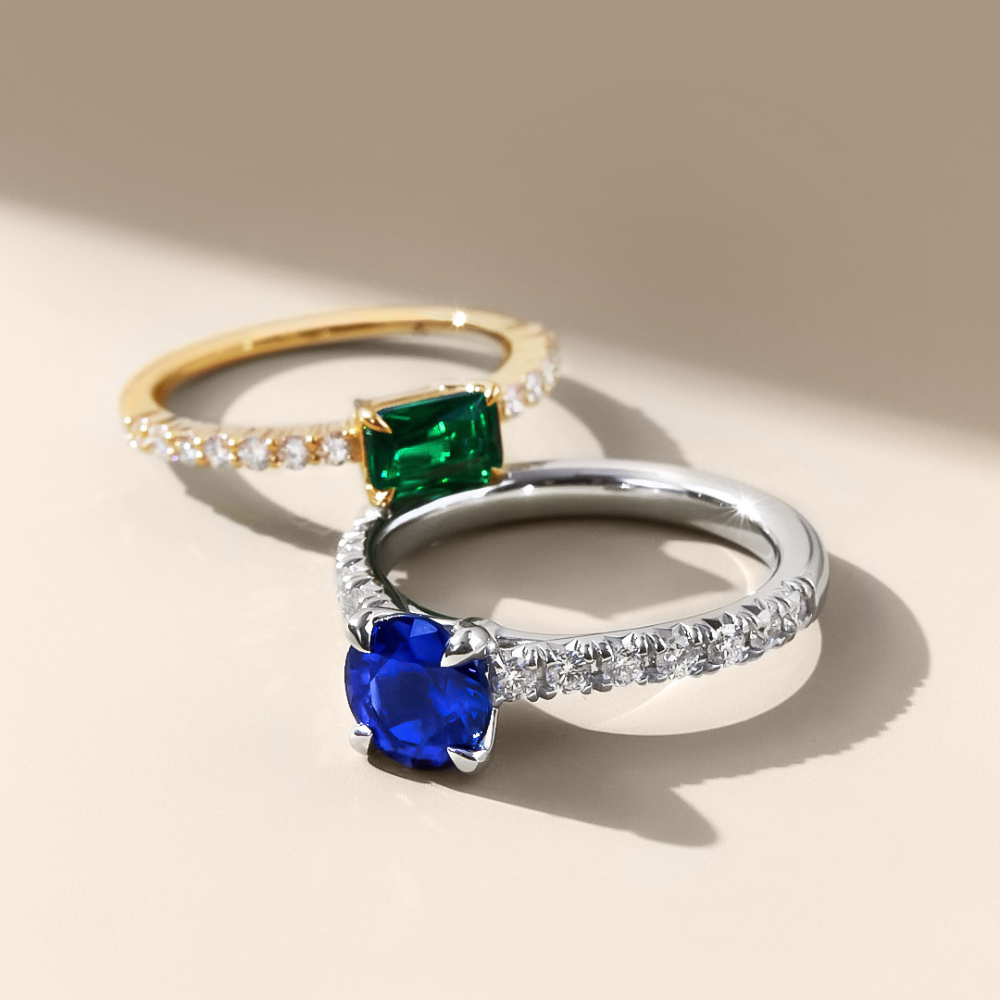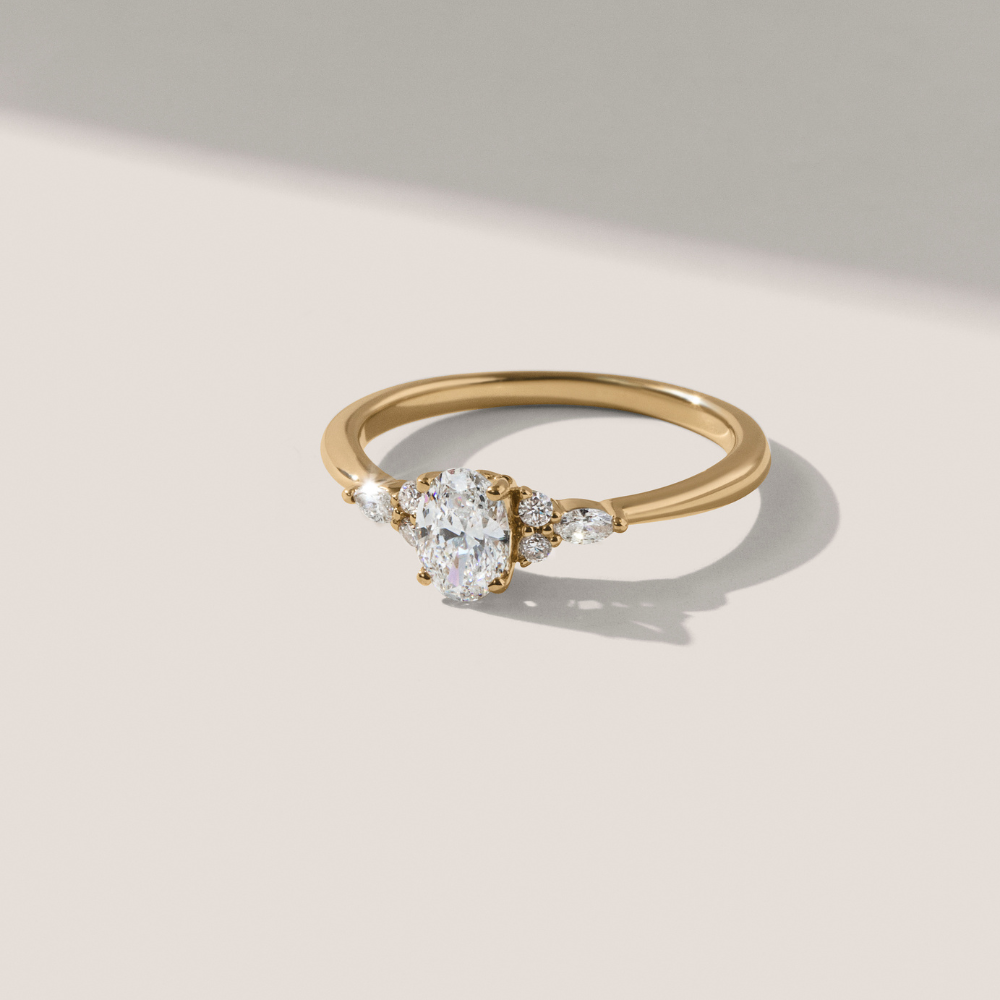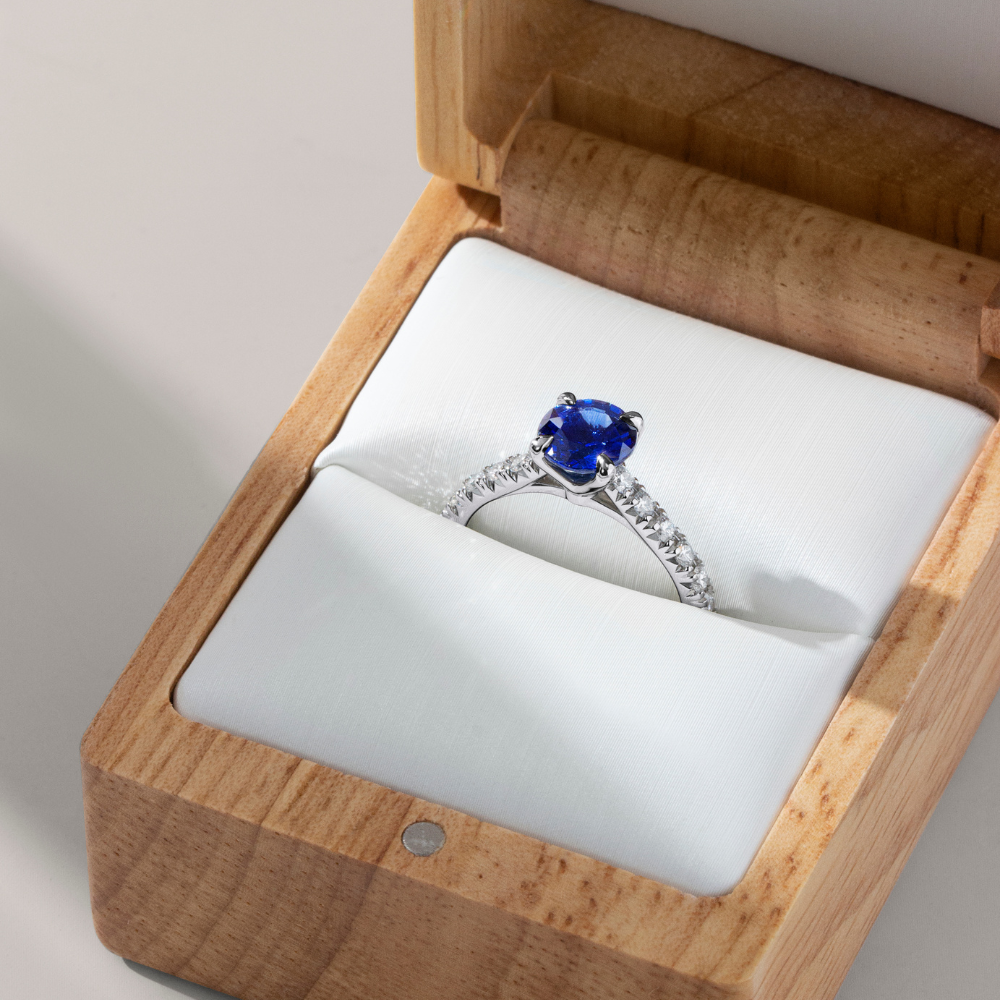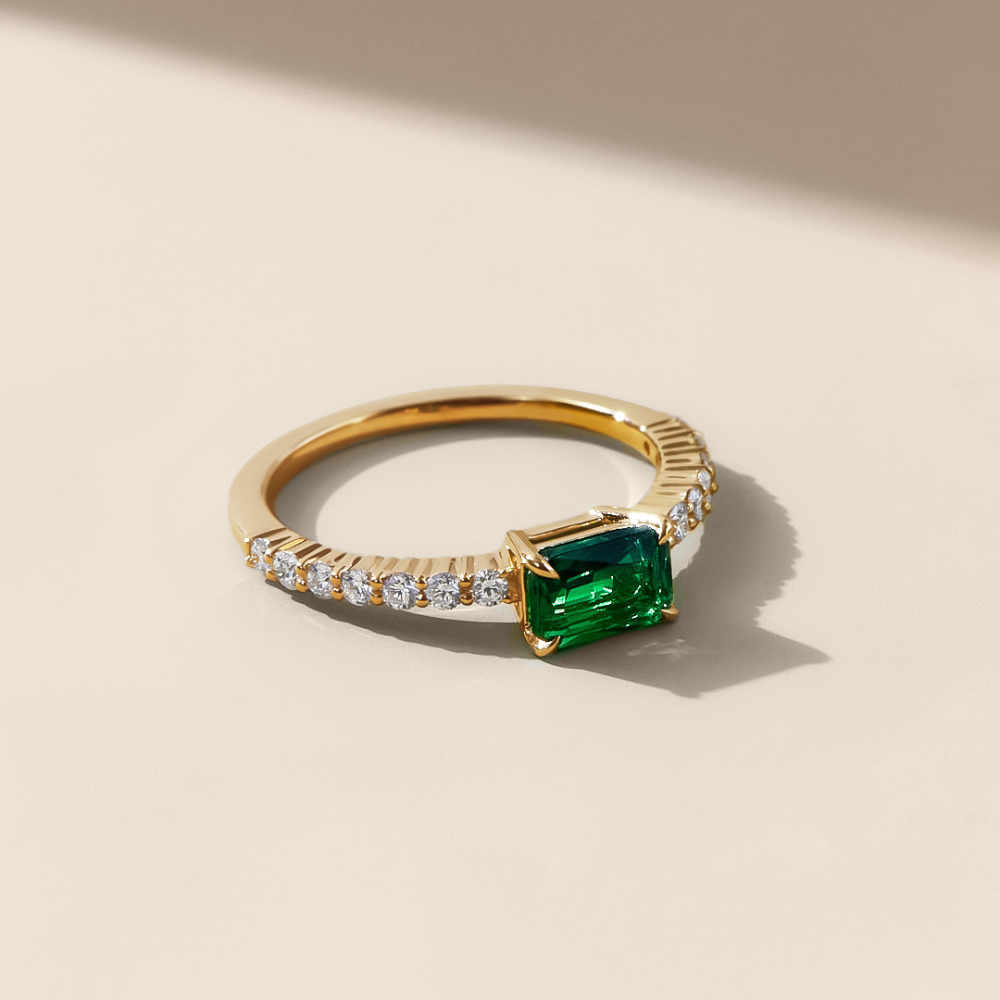
When considering which gemstone to pick for a ring you’ll wear every day (like your engagement ring), it’s important to consider durability. One of the best ways to measure this is through the Mohs hardness scale, which rates gemstones from 1 to 10, with 10 being the hardest. It’s advisable to choose a gemstone with a hardness of at least 7. To help you make an informed decision, we’ve compiled a list of the eight best gemstones for engagement rings, each chosen for its beauty and durability.
1) Diamond
Diamonds are the hardest known gemstone, scoring a perfect 10 on the Mohs hardness scale. This unmatched hardness makes diamonds exceptionally resistant to scratches, chips, and other forms of damage, ensuring they retain their brilliance over a lifetime. Beyond their durability, diamonds are renowned for their sparkle and ability to reflect light in a mesmerizing array of colors. These attributes make diamonds the classic choice for engagement rings, symbolizing enduring love and commitment. Read our Diamond Guide to learn more.

2) Moissanite
Moissanite is another top contender for engagement rings, with a hardness of 9.25 on the Mohs scale. Though slightly softer than diamonds, moissanite is still incredibly durable and resistant to scratches. It is also known for its exceptional brilliance and fire. Read our Moissanite Guide to learn more.
3) Sapphire
Sapphires, with a hardness of 9 on the Mohs scale, are well-suited for engagement rings. They are available in a wide range of colors, though the most popular is the classic deep blue. Sapphires are highly durable and resistant to scratches, making them ideal for daily wear. Their rich hues and strong durability have made sapphires a beloved choice for centuries. Read our Sapphire Guide to learn more.

4) Ruby
Like sapphires, rubies also rank 9 on the Mohs hardness scale. Rubies are known for their vibrant red color, which ranges from deep, rich crimson to lighter pinkish-red shades. The stone’s hardness ensures it can withstand the wear of everyday life without losing its beauty. Read our Ruby Guide to learn more.
5) Alexandrite
Alexandrite is a unique and rare gemstone with a hardness of 8.5 on the Mohs scale. It is prized for its remarkable color-changing properties, shifting from green in daylight to red or purplish red under incandescent light. This chameleon-like nature adds an element of surprise and mystery to the gemstone. While slightly softer than diamonds, sapphires, and rubies, alexandrite is still durable enough for daily wear in an engagement ring. Read our Alexandrite Guide to learn more.
6) Aquamarine
Aquamarine, with a hardness ranging from 7.5 to 8 on the Mohs scale, is a beautiful and durable gemstone. Its serene blue to blue-green color evokes the tranquility of the sea. While aquamarine is slightly softer than some of the other gemstones on this list, it is still hard enough to be suitable for daily wear, provided it is treated with care. Aquamarine’s calming hue and durability make it a favored choice for those who prefer a cooler color palette. Read our Aquamarine Guide to learn more.
7) Emerald
Emeralds, with a hardness of 7.5 to 8 on the Mohs scale, are among the most cherished gemstones for engagement rings. Their vivid green color is unparalleled, symbolizing loyalty and growth. With proper setting and care, an emerald can serve as a stunning and durable centerpiece for an engagement ring. Read our Emerald Guide to learn more.

8) Morganite
Morganite, with a hardness of 7.5 to 8 on the Mohs scale, is a gemstone known for its delicate pink to peach hues. While not as hard as diamonds or sapphires, morganite is still sufficiently durable for an engagement ring, especially when set in a protective setting like a bezel. Morganite’s soft, romantic color makes it a popular choice for those seeking a gemstone that is both beautiful and meaningful.
What stones shouldn’t be used as engagement rings?
While the stones listed above are well-suited for daily wear, certain gemstones are not recommended for engagement rings due to their lower hardness and greater susceptibility to damage. Gemstones such as opals and pearls, though stunning, are more easily scratched or chipped. Opals, for example, have a hardness of around 5.5 to 6.5 on the Mohs scale, making them more fragile. Pearls, even softer, rank between 2.5 to 4 on the Mohs scale, meaning they can be easily scratched or damaged. While these stones are beautiful and a good fit for other types of jewelry, they are not ideal for engagement rings that are meant to be worn daily. Ultimately, the choice of gemstone is a personal one, but for those seeking durability, it is advisable to select gemstones higher on the Mohs scale.
By considering the durability and hardness of these gemstones, you can make an informed decision when choosing the perfect stone for your engagement ring, ensuring that it remains as beautiful as the day you first wore it.




